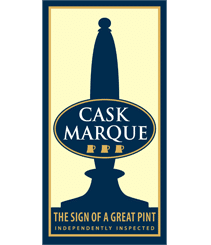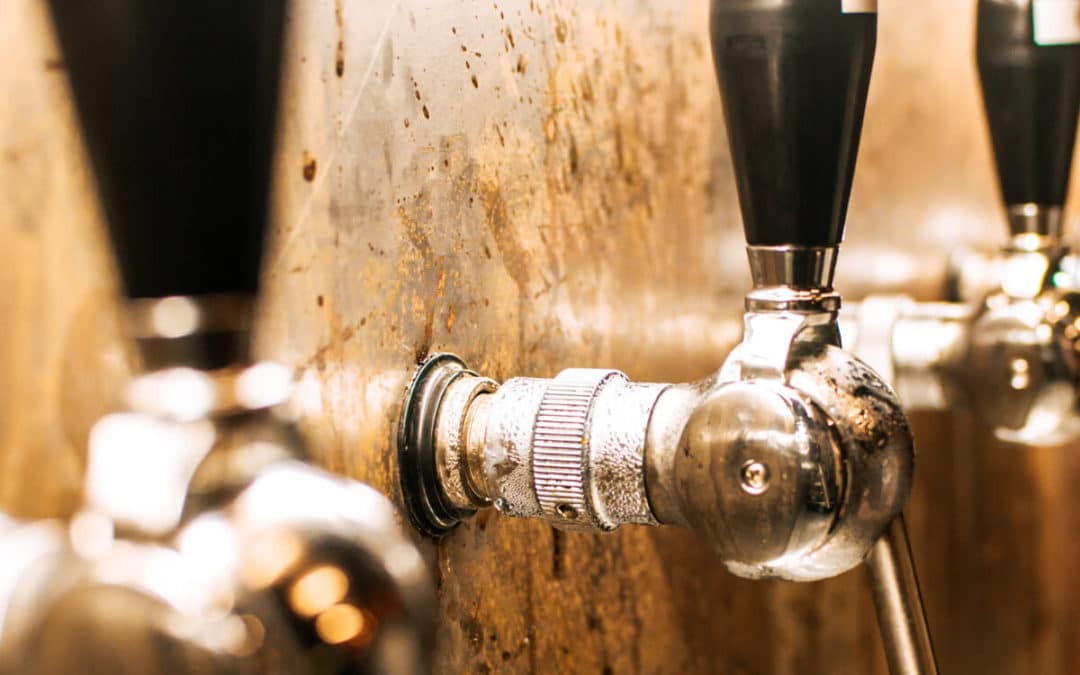Cask beer, also known as real beer, cask ale, cask conditioned beer and real ale is what we are all passionate about, but what’s the difference between cask and lager or keg ales?
Cask Beer:
- This is a fresh, unpasteurised product which needs ‘conditioning’ when delivered into the pub cellar
- It is made from 4 ingredients: water, malted barley, hops and yeast
- It is fermented twice, once at the brewery and once in the cellar of the pub
- It doesn’t have as much fizz as lagers because it has no added gas. However, it does have a light sparkle, or ‘tingle on the tongue’. This is from carbon dioxide produced naturally during the fermentation process
- Most cask beers can be identified by the ‘handpull’ on the bar, although some pubs serve it directly from the cask (“gravity fed”)
- Casks come in different sizes: a PIN contains 4½ gallons; a FIRKIN contains 9 gallons; a KILDERKIN contains 18 gallons; a BARREL contains 36 gallons
- When the cask is delivered into the pub cellar it needs to be cooled to cellar temperature (11-13 degrees centigrade) and be left to settle, either horizontally on a rack (STILLAGE) or upright on the cellar floor, for 24 hours as it contains sediment
- If the cask is lying on a horizontally on a stillage, the beer is conditioned (or prepared for sale) by venting (allowing the excess CO2 to be vented off into the atmosphere). This is done by knocking a hard wooden peg through the bung (the SHIVE) in the top of the cask, and replacing it with a soft breathable wooden peg.
- A tap is then knocked through the bung in the front flat end of the cask (the KEYSTONE). The beer line will be attached onto this tap.
Watch our video ‘What is cask ale?’ here
- Most cask beers will take up to 3 days to fully condition. They are ready when the beer is clear, has a fresh aroma and the taste matches the brewer’s description.
- If the cask is in an upright position it needs to be conditioned slightly differently. Some pubs use VERTICAL EXTRACTION RODS as this saves space in the cellar. The beer is vented by inserting a SHANK into the keystone and a tap is turned on to allow the beer to breathe. A long tube is then inserted through the shank into the beer. This is an extractor rod. The beer line is attached onto the extractor rod.
- Once the beer goes on sale, it is exposed to air. For every pint of beer dispensed, a pint of air goes into the cask. As it is a fresh product, we recommend cask beer should be sold within three days.
- If cask beer is on sale for more than three days it can pick up vinegary flavours (OXIDISATION), or stale papery flavours.
- When the beer is being dispensed, a soft peg should be placed in the shive, or the shank turned to the ‘on’ position. This allows air to be drawn into the cask and prevents a vacuum being created in the beer line.
- When the pub is closed, the beer should be sealed up by placing a hard wooden peg in the shive, or turning the shank to the ‘off’ position. This keeps the beer is perfect condition for the following day.
- The cellar should be scrupulously hygienic and all equipment used to condition and serve the cask should be clean. Otherwise, the beer may become infected.
- It should be served totally clear and at a cool 11 – 13 degrees centigrade (cool and refreshing and allowing all the full flavours and aromas to be savoured)
And most importantly of all, unlike keg products cask ale is a product which can only be experienced in its full glory in the pub!
To find pubs near you serving great cask beer, download the FREE CaskFinder app here
Keg beer are different from cask beers.
- Lagers are cold fermented with a yeast strain which can tolerate a cooler fermentation. They are served cold (between 2 and 8 degrees centigrade) and they are more ‘gassy’ than cask beer
- Some keg ales have a nitrogen mix added to the dispensing gas which gives the beer a creamy head (sometimes known as ‘creamflow’ or ‘smoothflow’)
- Certain keg beers are dispensed from a format known as ‘Key keg’. The beer in the keg has sediment so it still needs settling after delivery, but it is forced from the container using gas pressure, and served colder than cask.
- Some keg ales are referred to as ‘craft’ beers. There is no one single definition in the UK as to what is a craft beer, but this usually indicates they have more intense flavour and contain more premium ingredients
- These beers may also reference the ‘true to type’ historical styles (such as IPA or Stout) in a modern format, such as keg rather than cask
- Most mass produced keg beers are brewery conditioned: they undergo fermentation, are cold stabilised in the brewery and are then pasteurised or sterile filtered.
- Most mass produced lagers are filtered or pasteurised and they contain no live yeast. They are served under gas pressure which gives them more ‘fizz’
- Can be identified by the type of font or tap (they are served by switching on rather than pulling through) on the bar.
All beers provide great food matches – see our suggestions here
- In the cellar, kegs will be stood on end for dispensing with a coupler attached to the single aperture which feeds gas into the keg to push the beer towards the bar.
- Not all keg beers are produced by our multi national brewers. A number of smaller breweries have invested in the equipment needed to dispense keg beers. In a competitive cask market, this gives them access to sports clubs, restaurants etc which may not have the cellar space to serve traditional cask beer.
- Keg beer is no longer regarded as inferior to cask: innovation in brewing and dispense has led to increasingly interesting flavours and styles which has been embraced by a new generation of beer drinkers
Keep up to date with all the latest beer news and information on our Cask Matters page







Stouts are not necessarily keg beers.